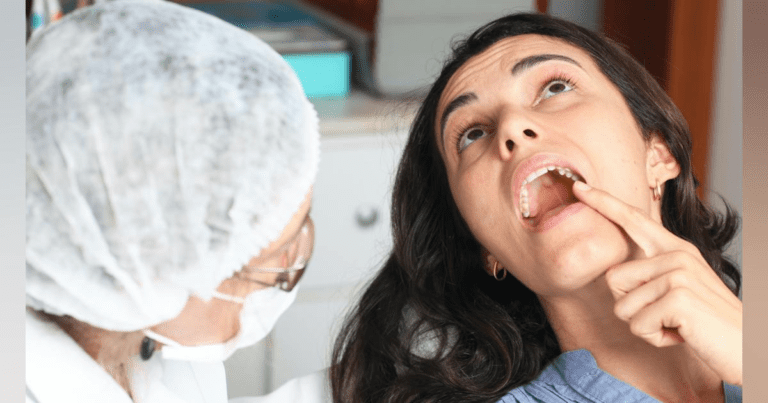Pain management is a primary concern in dentistry. Patients often endure discomfort during various dental procedures, ranging from routine cleanings to more complex treatments such as extractions and root canals. For decades, conventional methods of pain relief, such as local anesthesia and pain medications, were the mainstays of dental care.
However, an alternative approach is gaining prominence, potentially revolutionizing dental pain management: transcutaneous electrical nerve stimulation (TENS) units. Here’s a look at the historical development, operating principles, current use, and significant impact of TENS units in dentistry.
Also from Lisa Curbow: Vaping and oral health: Uncovering the hidden dangers
History of TENS
The roots of TENS units can be traced back to the early 1970s when they first appeared as a non-invasive method of pain relief. Originally invented for physical therapy applications, TENS technology is usually credited to American neurosurgeon Dr. C. Norman Shealy.1 TENS quickly gained recognition for its effectiveness in managing different pain conditions. The foundation of TENS is rooted in the “gate control theory of pain,” first proposed by researchers Ronald Melzack and Patrick Wall in 1965.2 According to this theory, pain signals are carried to the brain through nerve pathways and TENS units work by disrupting these signals.
How TENS units work
TENS units work on a simple but effective principle: by delivering low-voltage electrical currents to the surface of the skin via adhesive electrodes. These currents cause a tingling or buzzing sensation, which serves two main functions in the management of dental pain:
Pain relief: The electrical currents generated by the TENS units stimulate the nerves in the treatment area, effectively “closing the gate” on pain signals. This stimulation interferes with the transmission of pain messages to the brain, reducing the patient’s perception of discomfort.
Endorphin release: TENS units also cause the release of endorphins, the body’s natural pain relievers. These endorphins not only relieve pain but also promote a sense of well-being and relaxation.
Dental uses of TENS
The use of TENS units in dentistry is a newer practice that has not yet been widely adopted, but the technology shows promise for many uses. TENS technology in dentistry has evolved significantly, with numerous devices available to dental professionals. Dentists and patients can now benefit from advanced TENS units that cater specifically to dental applications. These units are designed with ease of use, accuracy and patient comfort in mind.
Patient experience and comfort
One of the main advantages of TENS units in dentistry is their ability to improve the patient experience. Patients undergoing dental procedures often experience fear and pain. TENS technology offers a non-invasive and drug-free alternative to traditional pain management methods, reducing patient anxiety and discomfort.
Dental procedures and TENS
There are no contraindications for using the TENS unit. TENS units are used in a wide range of dental procedures, including:
Tooth extractions: Patients undergoing tooth extractions can benefit from TENS units to manage post-procedure pain and discomfort.
Periodontal treatments: TENS units offer pain relief to patients receiving treatments for periodontal disease. This includes using TENS units for pain control during periodontal scaling procedures instead of anesthetic injections or local anesthetic.
Orthodontic procedures: Patients undergoing orthodontic adjustments can experience relief from the discomfort associated with braces and aligners through TENS. The TENS unit can help relieve pain after each adjustment.
TMJ Disorders: TENS is used to relieve pain and tension in patients with temporomandibular joint (TMJ) disorders. Used inside the mouth, the units can interrupt the pain signal from the inflammation in the joint.
Preventive and cosmetic procedures: TENS technology is also used to manage pain during routine cleanings and cosmetic dental procedures. Used before probing, TENS can make the experience much more comfortable.
Tooth sensitivity and sharp pain: TENS units used directly on teeth can interrupt pain signals from the nerve to stop both sensitivity and sharp pain from an abscessed/infected tooth.
Toothache: TENS units are safe to use with babies to help with teething pain. They can be used directly on the tissue to stop teething irritation, making the infant or toddler more comfortable.
Ulcer and trauma pain: These units can also be used to reduce or relieve pain from bites, aphthous and traumatic ulcers, and other oral wounds and sores. Used around the injury or lesion, they can make it much more comfortable for the patient to eat or swallow while healing.
The future of TENS in dentistry
As the dental community continues to embrace TENS technology, it is likely to become a more integral part of dental care. The innovation and advancement of TENS units designed specifically for dental applications will further improve patient comfort and satisfaction during dental procedures.
TENS units represent a groundbreaking advance in dental pain management. Their historical development, rooted in the gate control theory of pain, their mechanisms of action, and their increasing adoption statistics confirm their increasing importance. TENS units offer patients and dentists a non-invasive, drug-free approach to pain relief, enhancing the overall dental experience. As dental technology continues to evolve, TENS units are poised to play an increasingly pivotal role in dental practices worldwide, redefining patient comfort and quality of care.
bibliographical references
- Teoli D, An J. (2023, January 22). Transcutaneous electrical nerve stimulation. At StatPearls. StatPearls Publishing. Retrieved from
- Mendell LM. Constructing and deconstructing the pain gate theory. Pain. 2014? 155 (2): 210-216. doi:10.1016/j.pain.2013.12.010
Lisa Curbow, BAAS, RDH, has been in clinical practice for nearly three decades, serving both periodontal and general practices. She has also served as an office manager and hospital coordinator. Lisa’s passion is to educate and empower others to be better equipped to treat patients with special needs. He is a member of SCDA, AADMD and iADH. You can contact Lisa at [email protected].


